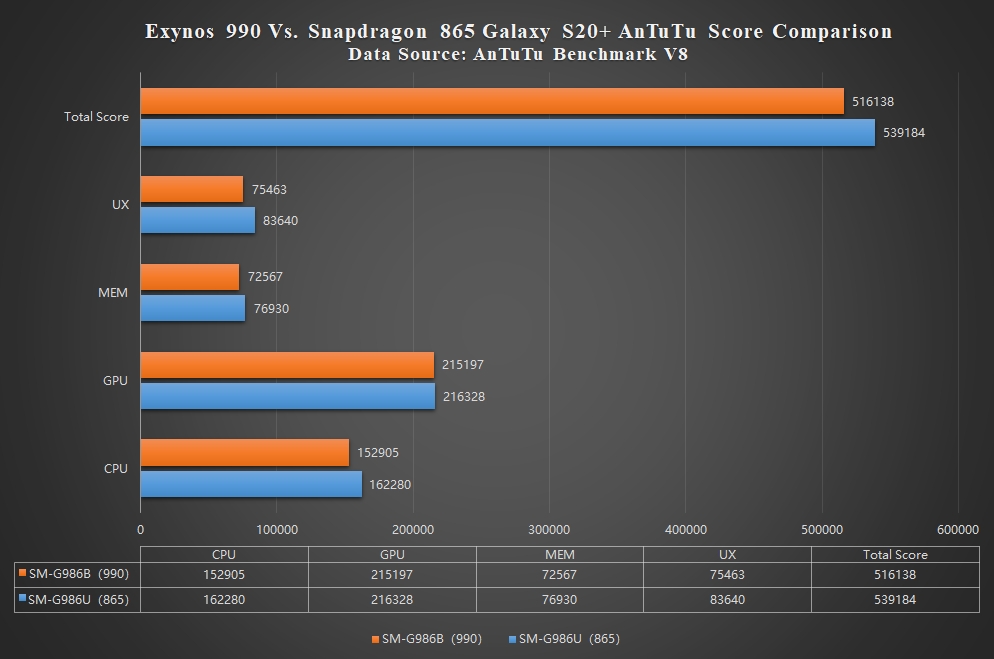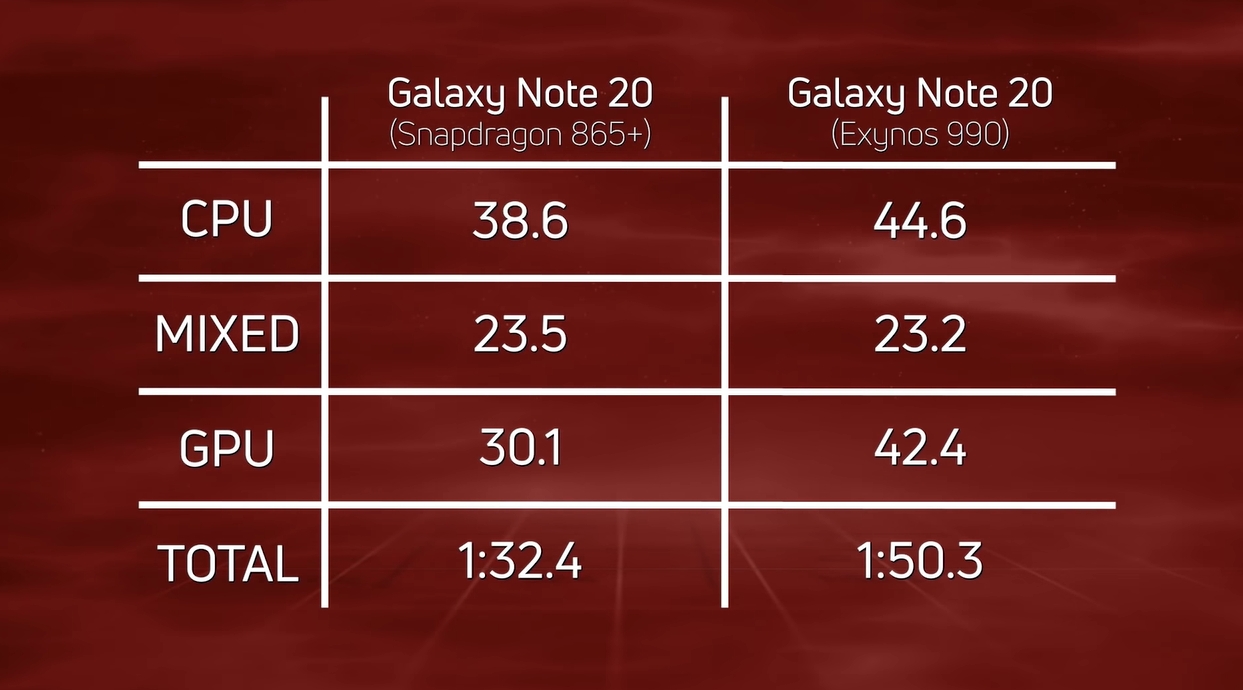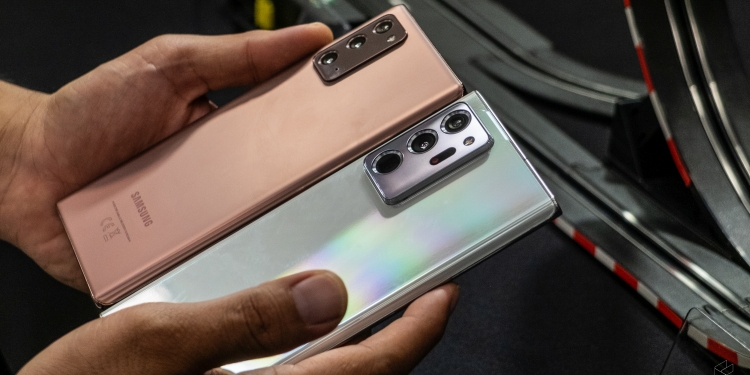The Samsung Galaxy Note 20 series is the latest flagship smartphone that comes with an S Pen. However, if you look at any social posting about the device, most Malaysians would complain that the local units are powered by an Exynos 990 instead of Qualcomm’s latest Snapdragon 865+. It’s no secret that Samsung typically makes two variants for its flagship models and Malaysia often gets the Exynos version. So why is it such a big deal now when it comes to the Note 20?
Before that let’s look at the first flagship model of the year, which is the Galaxy S20 series. In most global markets including Malaysia, the device runs on a 7nm Exynos 990 while in the US, China, Korea and Japan, the S20 is powered by a 7nm Snapdragon 865.

At that time, benchmarks have shown that Qualcomm’s Snapdragon chip had offered better performance and efficiency compared to its in-house developed chipset. As illustrated by Antutu’s benchmark above, the Snapdragon 865 provides 6% better CPU performance than the Exynos 990.
Apparently, Samsung was embarrassed by the performance gap and as a result, they had opted to offer the Snapdragon version for its own domestic market. With 5G being rolled out at a large scale in Korea, users would definitely appreciate the power efficiency of the Qualcomm chipset.
For the Note 20 series, that performance gap has widen thanks to the newer Snapdragon 865+. Although the chip shares the same cores as the non-Plus version, the updated chipset runs at a higher clock speed for both CPU and GPU. According to Qualcomm, this translates to better CPU performance and 10% better graphics.
To illustrate the speed gap, you can check out the SpeedTest G video above which compared the Galaxy Note 20 Ultra Snapdragon 865+ variant with the Exynos 990 version. From their findings, both versions performed about the same in the mixed category but the Snapdragon 865+ clearly has the edge in CPU and GPU tests. For the entire test run, the Snapdragon version is 17.9 seconds quicker.

So is it a big deal? For those coming from an older Note, the Exynos 990 processor is still a significant upgrade over the previous models. It is still the most powerful processor that Samsung currently offers and from our usage, we don’t have major issues when it comes to performance. The 5G variants also allow you to connect to the upcoming 5G networks when it’s available and it also supports WiFi 6.
However, if you’re going to spend more than RM5,000 and expecting the very best in the market, you might be disappointed considering there’s a version out there that’s significantly better. The situation could have been different if Samsung had released an improved version like an Exynos 995 of sorts to close the gap. If you look at last year’s releases, the Galaxy S10 series was shipped with an 8nm Exynos 9820 but the Note 10 series was released with an improved 7nm Exynos 9825.
What’s even more mind-boggling is that Samsung appears to have ordered a truckload of Snapdragon 865+ chips to be fitted in everything else. This includes the new Galaxy Z Flip 5G, the Galaxy Z Fold 2 and even the Galaxy Tab S7 and S7+.
Samsung Malaysia does offer Snapdragon powered smartphones for our local market. The Galaxy Fold and Galaxy S10 Lite are both running on a Snapdragon 855 processor while the Galaxy Z Flip runs on a Snapdragon 855+. Even the mid-range Galaxy A71 and Galaxy A80 are powered by a Snapdragon 730.
[ SOURCE ]








